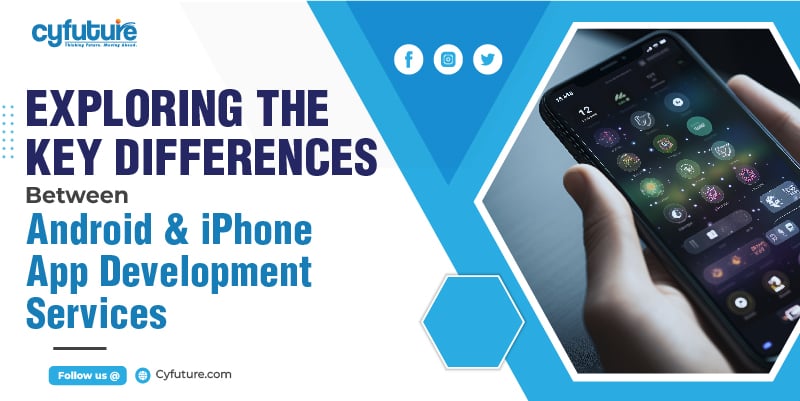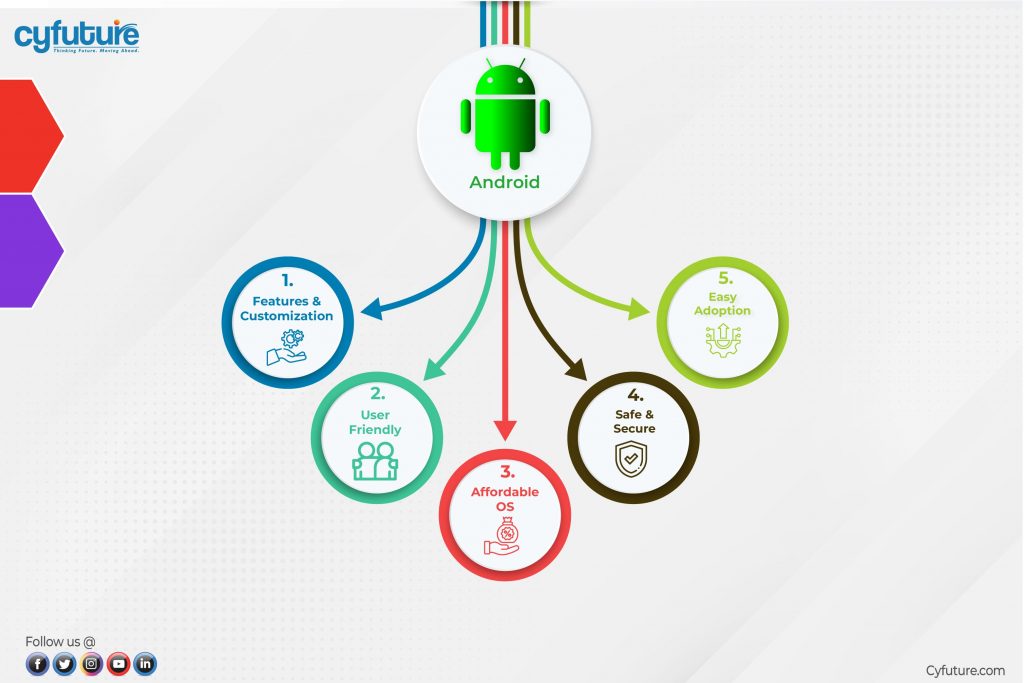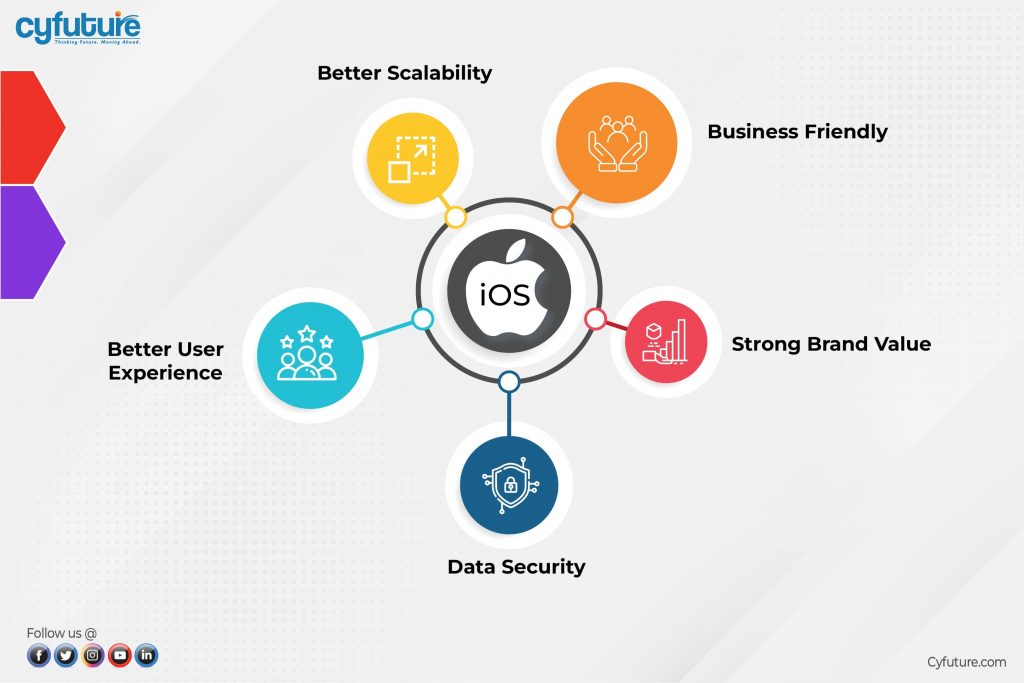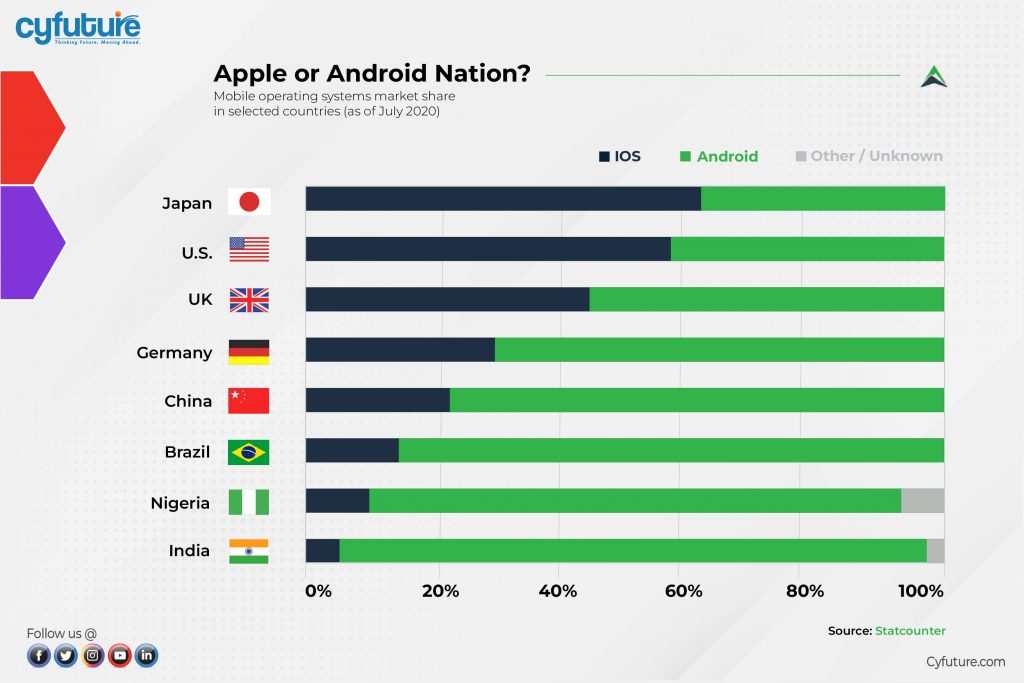-
Get Cloud GPU Server - Register Now!
Toggle navigation

As businesses strive to tap into this expanding market, the demand for app development services has surged. However, it is essential to understand the key differences between Android development services and iPhone app development to ensure the successful implementation of app ideas.
Android development services cater to the Android operating system, which powers a significant portion of smartphones globally. According to recent statistics, Android holds the largest market share, with over 72% of the mobile operating system market (StatCounter, 2021). On the other hand, iPhone app development services are specifically designed for Apple’s iOS platform, known for its sleek design and premium user experience. iOS holds a substantial market share as well, with over 27% (StatCounter, 2021).
Understanding the differences between these two app development services is crucial for businesses and individuals looking to create successful applications. Each platform has its unique set of advantages and limitations that can impact the development process, user experience, and overall success of the app.
The purpose of this blog is to shed light on the key distinctions between Android and iPhone app development services. By providing factual data, statistics, and expert insights, we aim to equip readers with the necessary knowledge to make informed decisions about their app development endeavors. Whether you are a business owner, an aspiring developer, or simply interested in the field, this blog will help you gain a deeper understanding of the differences between Android and iPhone app development services.

The Android platform, developed by Google, has emerged as a dominant force in the mobile app market. It offers a versatile operating system that powers a wide range of smartphones, tablets, and other devices. Android development services cater to this platform, allowing developers to create applications that can run seamlessly on Android devices.
One of the notable features of Android is its open-source nature, which means that its source code is freely available for modification and customization. This openness has led to a diverse ecosystem of Android devices, manufactured by various companies. As a result, Android development services need to account for the differences in hardware specifications, screen sizes, and software versions across devices.
Android app development primarily relies on two programming languages: Java and Kotlin. Java has been the traditional language used for Android development and has a vast developer community and a wide range of resources available. Kotlin, on the other hand, is a modern programming language developed by JetBrains and officially supported by Google for Android development. Kotlin offers concise syntax, enhanced safety features, and seamless interoperability with existing Java code, making it an increasingly popular choice among developers.
Market reach and user base: One of the significant advantages of Android development services is the platform’s extensive market reach. With a market share of over 72% (StatCounter, 2021), Android boasts a large user base, providing businesses with the potential to reach a wide audience. This broader market reach can translate into increased app downloads, user engagement, and revenue opportunities.
Customizability and flexibility: Android offers a high level of customizability and flexibility, allowing developers to create unique and innovative applications. The platform provides extensive customization options for user interfaces, enabling developers to tailor the app’s look and feel according to their brand’s identity and user preferences. Additionally, Android’s open nature enables developers to integrate third-party libraries and tools, further enhancing the functionality and features of the app.
Availability of third-party app stores: Unlike iPhone app development services, Android allows users to install apps from third-party app stores, in addition to the official Google Play Store. This flexibility provides developers with alternative distribution channels, enabling them to reach users who may not have access to the Google Play Store or prefer other app marketplaces. This opens up additional opportunities for app discovery and monetization.
Fragmentation and device compatibility: The diverse device ecosystem of Android presents a challenge for developers in terms of fragmentation and device compatibility. With numerous devices running different versions of Android and varying screen sizes, developers need to ensure that their apps are compatible and provide a consistent user experience across a wide range of devices. This requires thorough testing, optimization, and adaptation to different screen resolutions and device capabilities.
Security concerns: The open nature of Android, while offering flexibility, also introduces security concerns. With a higher number of devices and app sources, the risk of malware and security vulnerabilities increases. Android development services must prioritize security measures, such as secure coding practices, robust encryption, and regular security updates, to protect user data and maintain trust.
Testing and optimization: Due to the diverse hardware configurations and software versions in the Android ecosystem, rigorous testing and optimization are crucial for a successful app launch. Testing on multiple devices and versions of Android is necessary to ensure optimal performance, usability, and compatibility. Developers must invest time and resources in thorough testing processes to identify and resolve any issues before releasing the app to the market.

The iOS platform, developed by Apple, powers the iconic iPhone and iPad devices. It is known for its seamless user experience, polished interface, and emphasis on quality. iPhone app development services focus on creating applications specifically tailored for the iOS operating system.
Unlike the open nature of Android, Apple’s ecosystem is more closed and tightly controlled. Apple designs both the hardware and software, resulting in a more integrated and consistent user experience. However, this closed ecosystem means that iPhone app development services are limited to Apple devices, such as iPhones, iPads, and iPod Touch.
Historically, Objective-C was the primary programming language used for iPhone app development. However, Apple introduced Swift as a modern, safe, and efficient programming language, which has gained significant popularity among developers. Today, both Objective-C and Swift are used in iPhone app development, with Swift being the preferred choice for new projects.
High user engagement and monetization potential: iPhone users have been found to be more engaged and spend more money on apps compared to Android users. Statistically, the Apple App Store generates higher revenues, with an estimated 30% more app revenue than the Google Play Store (Sensor Tower, 2021). This makes iPhone app development services an attractive option for businesses aiming to monetize their applications.
Consistent user experience: Due to Apple’s strict guidelines and quality control, iPhone app development services can ensure a consistent user experience across different iOS devices. The design principles and standards set by Apple contribute to a cohesive and intuitive user interface, leading to higher user satisfaction and retention.
Strong emphasis on security and privacy: Apple places a significant emphasis on security and privacy in its ecosystem. The company enforces stringent security measures and privacy policies, providing users with a sense of trust and confidence in their devices and applications. iPhone app development services must adhere to these guidelines, ensuring that user data remains secure and protected.
Strict app submission guidelines: Apple maintains strict guidelines for app submissions to the App Store, ensuring quality, security, and compatibility. This can make the app approval process more rigorous and time-consuming compared to Android. iPhone app development services must meticulously follow these guidelines and address any issues or rejections during the submission process.
Limited customization options: While Apple’s closed ecosystem ensures consistency, it also limits the level of customization available for iPhone app development. Developers have to work within the framework provided by Apple, which may restrict certain design choices and functionalities. However, this limitation also promotes a streamlined and polished user experience.
Compatibility with different iOS versions: With each new iOS release, compatibility with older versions becomes a consideration for iPhone app development services. Ensuring that the app functions seamlessly across different iOS versions may require additional testing and adaptation. Developers must strike a balance between utilizing the latest features and maintaining compatibility with a broader user base.
Understanding the nuances of iPhone app development services is crucial for businesses and developers aiming to leverage the unique advantages and characteristics of the iOS platform. By effectively addressing the challenges and considerations, one can create high-quality, user-centric applications for Apple devices.

While there are distinct differences between Android development services and iPhone app development services, the overall app development process shares some similarities. Both platforms follow a similar iterative approach, involving steps such as ideation, design, development, testing, and deployment. These steps ensure that the final product meets the desired objectives and offers a seamless user experience.
Android Studio for Android app development: Android Studio is the official integrated development environment (IDE) for Android app development. It offers a comprehensive suite of tools and features that assist developers in creating robust and efficient Android applications. Android Studio provides a rich code editor, debugging tools, emulators, and a visual layout editor, enabling developers to build apps with ease.
Xcode for iPhone app development: Xcode is the primary IDE for iPhone app development. Developed by Apple, it offers a range of tools and resources to streamline the development process. Xcode provides a powerful code editor, interface builder, debugging tools, and performance analyzers. It also includes simulators for testing apps on various iPhone and iPad devices, ensuring app compatibility and performance.
Cross-platform development frameworks (React Native, Flutter): In addition to platform-specific development tools, there are cross-platform frameworks that enable developers to build apps for both Android and iOS using a single codebase. React Native, developed by Facebook, allows developers to create native-like apps using JavaScript and reusable components. Flutter, developed by Google, offers a similar concept but uses the Dart programming language. These frameworks provide flexibility and efficiency by reducing the need for separate Android and iPhone app development services.
While the app development process and some tools may be similar, there are differences in coding practices and the development environment for Android and iOS platforms. Android development services primarily use Java or Kotlin for coding, while iPhone app development services primarily use Objective-C or Swift. Each language has its syntax, coding conventions, and development patterns.
Furthermore, the development environments for Android and iOS platforms differ in terms of the operating systems, software development kits (SDKs), and libraries used. Android development services rely on the Android SDK, which provides the necessary tools and APIs for Android app development. iPhone app development services utilize the iOS SDK, which includes frameworks and resources specific to iOS development.
Additionally, the user interface design guidelines for Android and iOS platforms vary, requiring developers to adapt their app’s UI elements and interactions accordingly. Android follows Material Design principles, focusing on clean, modern aesthetics and intuitive navigation. iOS adheres to Human Interface Guidelines, emphasizing simplicity, clarity, and consistency in UI design.
Understanding these differences in coding practices and development environments is crucial for developers and businesses aiming to create high-quality apps for both Android and iOS platforms. By leveraging the appropriate tools and adhering to platform-specific guidelines, developers can deliver seamless and engaging experiences for users on each platform.
When it comes to distributing apps, Android development services rely on the Google Play Store, while iPhone app development services primarily target the Apple App Store. These platforms serve as the main distribution channels for Android and iOS applications, respectively.
In-app purchases: In-app purchases allow users to buy additional content, features, or virtual goods within an app. This revenue model is widely used by both Android and iPhone apps, providing opportunities for developers to generate income beyond the initial app purchase or download.
Advertising: Advertising presents another monetization strategy for app developers. Through ad placements within the app, developers can earn revenue based on impressions, clicks, or conversions. Both Android and iPhone app development services can leverage various ad networks and formats to monetize their apps.
Subscription-based models: Subscription-based models involve users paying a recurring fee to access premium content or services within an app. This revenue model has gained significant traction in recent years, particularly for apps offering premium content, exclusive features, or access to specialized services. Both Android and iPhone app development services can implement subscription-based monetization strategies.
There are differences in revenue potential and user spending patterns between Android and iOS platforms. Although Android holds a larger market share, statistics indicate that iPhone users tend to spend more on apps and in-app purchases compared to Android users (Sensor Tower, 2021). This can be attributed to various factors, including the higher purchasing power and spending habits of iPhone users.
Furthermore, research suggests that users on iOS platforms are more likely to opt for premium apps or paid features compared to Android users, who often prefer free apps or ad-supported models (App Annie, 2021). As a result, developers working with iPhone app development services may have a higher revenue potential, especially if they offer quality, premium content or services that align with the preferences of iOS users.
Understanding these differences in revenue potential and user spending patterns can help developers and businesses make informed decisions when choosing between Android development services and iPhone app development services. By considering the target audience, app content, and monetization strategies, developers can maximize their revenue opportunities and create sustainable business models.
Android development services follow Material Design principles, which aim to create visually appealing and intuitive user experiences. These principles are based on Google’s design philosophy and provide guidelines for designing Android apps.
Material Design emphasizes the use of bold colors, depth, and motion to create engaging interfaces. It promotes the use of consistent and recognizable design elements, such as cards, grids, and responsive animations. Material Design also encourages the use of meaningful and context-aware transitions to provide a seamless user experience.
One of the strengths of Material Design is its flexibility, allowing developers to customize the appearance of their apps while still adhering to the overall design principles. Android development services can tailor the visual elements, typography, and color schemes to match the branding and style of the app or business.
iPhone app development services follow the iOS Human Interface Guidelines, which outline the design principles and guidelines for creating user-friendly and visually appealing apps on iOS platforms. The iOS Human Interface Guidelines emphasize simplicity, clarity, and consistency in app design. It encourages the use of a clean and minimalist interface with intuitive gestures and interactions. The guidelines highlight the importance of providing clear navigation, hierarchy, and visual feedback to enhance the user experience.
Apple places a strong emphasis on maintaining a consistent user experience across iOS apps. The guidelines provide detailed instructions on how to use system-provided UI elements, icons, and controls. This consistency ensures that users can easily navigate and understand the functionality of different iOS apps, enhancing their overall satisfaction.
To create a successful app, developers must consider the platform-specific design guidelines and tailor the user experience accordingly. Android development services should focus on implementing Material Design principles, ensuring a visually appealing and engaging experience for Android users. Similarly, iPhone app development services should adhere to the iOS Human Interface Guidelines, creating a seamless and intuitive experience for iOS users.
While there may be similarities in the overall user experience and design principles, understanding the nuances of each platform’s guidelines is crucial. By following the respective design principles, developers can leverage the strengths of each platform, provide a familiar experience to users, and enhance user satisfaction.
Ultimately, by prioritizing user experience and aligning the design with the platform-specific guidelines, Android and iPhone app development services can create visually appealing, user-friendly, and engaging applications that resonate with their target audience.
When deciding between Android development services and iPhone app development services, understanding market share and regional differences is crucial.
Android holds a significant market share globally, with approximately 72% of the market as of 2021 (StatCounter). This dominance is particularly pronounced in emerging markets and developing economies due to the availability of affordable Android devices. On the other hand, iOS holds a smaller but still substantial market share, with a strong presence in developed markets where consumers tend to have higher purchasing power.
Regional differences also play a role in market share. Android has a larger market share in regions such as Asia, Africa, and Latin America, while iOS tends to be more prevalent in North America, Europe, and Australia.

Android and iPhone users exhibit distinct demographic and user behavior patterns. Understanding these differences can help inform the choice between Android development services and iPhone app development services.
Android users tend to be more diverse in terms of age, income level, and education. They often include a larger demographic of younger users and those seeking affordable devices. Android users also tend to have a wider range of app preferences and are more likely to gravitate toward free apps or ad-supported models.
On the other hand, iPhone users generally have higher incomes and education levels. They are often seen as early adopters of technology, more willing to spend on apps and in-app purchases, and more engaged in terms of app usage. iPhone users also have higher customer loyalty and are more likely to remain within the iOS ecosystem.
When choosing between Android and iPhone app development services, it is important to consider the target audience of the app.
If the app’s target audience aligns with the demographic and user behavior patterns of Android users, opting for Android development services may be more suitable. This is especially true for apps targeting emerging markets, price-conscious consumers, or those with a diverse user base.
Alternatively, if the app targets a more affluent demographic, relies on in-app purchases or subscriptions, or prioritizes a polished user experience, iPhone app development services may be a better fit. iOS’s reputation for user engagement, higher spending habits, and customer loyalty make it an attractive choice for such apps.
By considering the target audience’s preferences, demographics, and user behavior, businesses and developers can make informed decisions when selecting the appropriate platform for their apps. This ensures that the app reaches the desired user base and maximizes its potential for success.
In the world of app development, choosing between Android development services and iPhone app development services requires careful consideration of various factors. Throughout this blog, we have explored the key differences between the two platforms, including their app development processes, tools, user experience guidelines, market share, and target audience.
To make an informed decision, it is crucial for developers and businesses to carefully assess their app’s requirements and target audience. Understanding the demographics, user behavior patterns, and spending habits of Android and iPhone users can help align the app with the platform that best suits its goals and monetization strategies.
Furthermore, adapting the development approach to each platform’s specific guidelines is vital for maximizing user engagement and overall success. By adhering to Android’s Material Design principles or iOS’s Human Interface Guidelines, developers can create visually appealing and intuitive user experiences that resonate with their target audience.
Ultimately, success in the app development market requires a thorough understanding of the differences between Android and iPhone app development services, coupled with a strategic approach tailored to the app’s objectives and target audience. By carefully considering these factors and adapting the development approach accordingly, developers can create high-quality apps that capture the attention and engagement of their users, leading to a greater likelihood of success in the competitive app market.